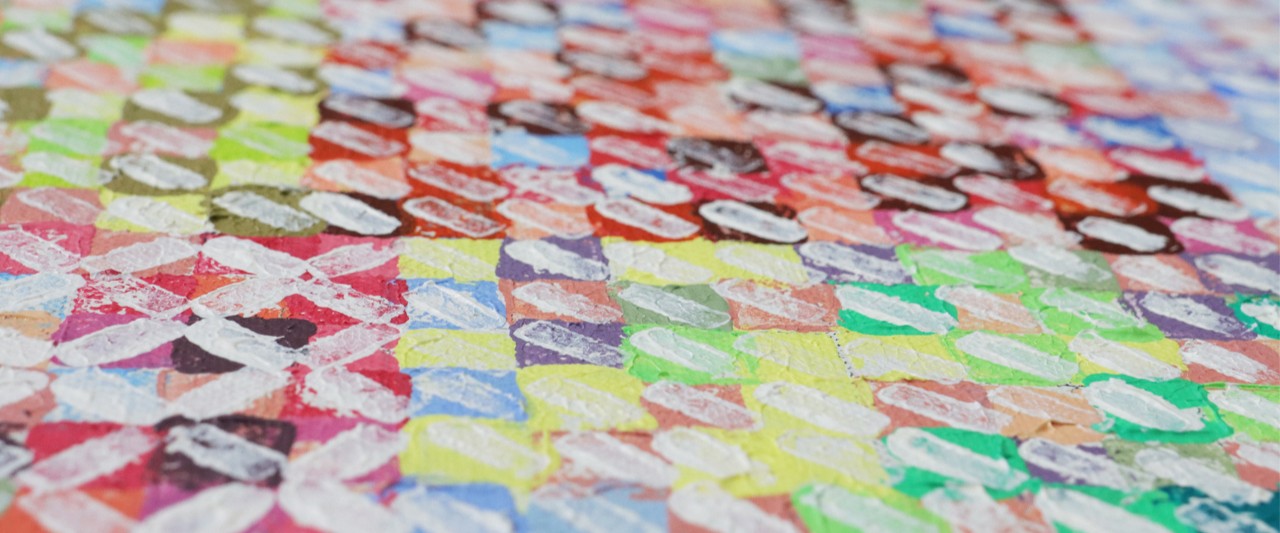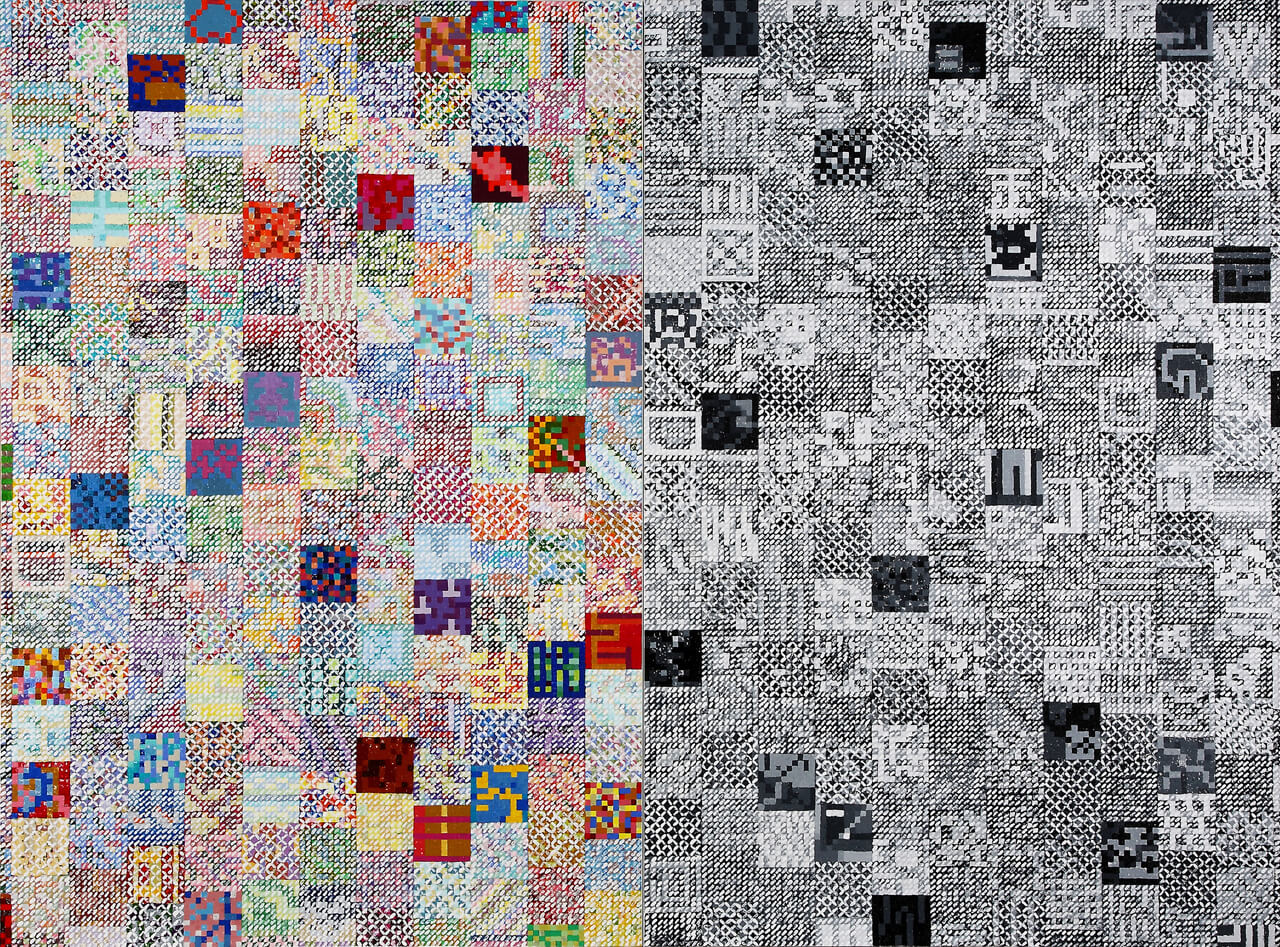|EXHIBITION
A stamp measuring one square centimeter, a philosophy measuring one square centimeter, a fitting composition, an implicit logic, Tsong Pu and Ma Yuan, Ma Yuan and Tsong Pu, contemplating each other, like searching for visual propositions of Western abstract art and Chinese landscape painting, matrices, oblique angles, pure creative experiences, exploring one's own existence, exploring inner scenery. From November 10 to December 8, 2012, "Ma Yuan at a Corner | 2012 Tsong Pu Solo Exhibition" invites you to explore the meaning of oblique angles for yourself between understanding and seeing at Main Trend Gallery.
"Ma Yuan at a Corner" is a chance philosophical encounter, a series of non-coincidental creative symphonies. Ma Yuan (c. 1160-1225) subverted the "panoramic composition" that had been prevalent since the Five Dynasties and expressed the landscapes of the Jiangnan region with an edge-corner layout, forming a special "side-corner" visual style and opening up a new era of traditional Chinese painting and calligraphy. Ma Yuan is still known as "Ma the One-Corner". Tsong Pu, rooting or transcending art in the context of daily life, uses stamps as his brush to imprint the changing trajectory of life's fleeting moments. He follows geometric abstractionism but also has the charm of the East. When two different historical "perspectives" meet, they inevitably produce a "tension," or "perspective fusion," as described by Hans-Georg Gadamer (1900-2002). In "Ma Yuan at a Corner," the past and the present merge, interacting with each other as subjects, reflecting on their own situation, and realizing the truth of their own existence.
Tsong Pu, who studied in Spain and returned to Taiwan in the 1980s, has a diverse and extensive body of work that includes painting, sculpture, photography, conceptual art, and installation art. He has been deeply influenced by geometric abstraction, extreme art, and conceptual art, and his works are highly dialectical and open to multiple interpretations. Geometric Abstraction art organizes multiple or single forms in a rational order to form continuous or repeated geometric shapes and is governed by the order between them, rejecting any natural depiction. Tsong Pu, who works on this basis, is famous for his one-square-centimeter stamps. In simple and repetitive mother themes such as squares, matrices, and oblique structures, he constructs complex and layered pictorial spaces, replacing brushes with stamps, creating unique imprints through the labor of long-term stamping, shaping the interaction between body and consciousness, the fluctuation of thoughts and the pulse of ideas, layer upon layer, constructing and then destroying, and reconstructing after destruction, with the subject retreating to observe and think forward, reaching the realm of self-existence.
Tsong Pu strongly believes that the inner world can be more real than the visible world. In his paintings, the one-square-centimeter imprint is a special meaning of "existence," "essence," and "concept. " "Existence" is the phenomenon of everything in the world; "essence" is the inherent property of things themselves; "concept" is the neutral connection between phenomenon and essence, an abstract universal concept. Human beings can understand the essence through the phenomena, but the sensations cannot express the essence, and they can only be brought out through thinking. Through the three stages of development from "existence" (subjective consciousness of individual consciousness) to "essence" (objective consciousness of social consciousness) and finally, to "concept" (absolute spirit of art, philosophy, or religion), ideas can be transformed into sensual things, become free or actual, ultimately embodied in the spirit of individuals or social history, and become a self-conscious existence of ideas.
Reading Tsong Pu's works, one can see the visible form at a glance, but hidden within is an uninterpretable structure and space. Perhaps incomprehensible, but clearly visible is the sum of suggestive movement and spatial illusion. "Ma Yuan at a Corner " extends Tsong Pu's philosophical speculation, carrying the poetic world of "existence" in the corners and matrices.
+ Learn More
|M Show: BUY NOW|
|SOLO──Tsong Pu|
|
SOLO──Tsong Pu
|
+ Learn More
|m Space|
|Tsong Pu──The World Comes From “Something”|
⌈Every artist is keen to express himself/herself, insofar as to affect the majority viewpoint. Actually, it is little more than a utopian ideal of attempting the impossible or presenting something extremely onerous to present. Difficulties notwithstanding, I’m delighted to be the artist.|Tsong Pu⌋ |
⌈As far as I’m concerned, avant-garde is synonymous with subversion or revolution. Change your ways and you can change everything! Keep re-orientating yourself and you’ll blaze a trail!|Tsong Pu⌋ |
|
Tsong Pu──The World Comes From “Something”
|










